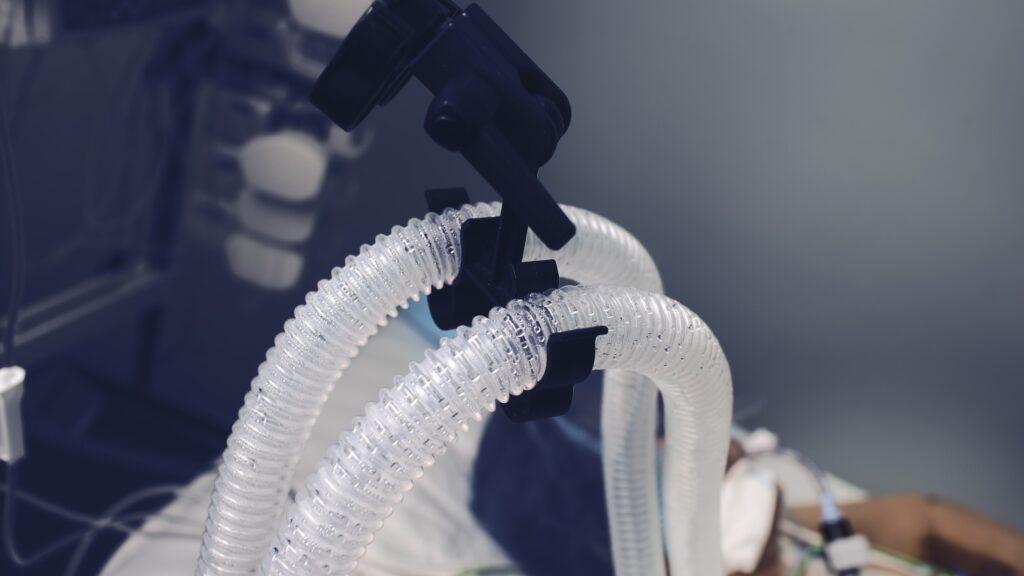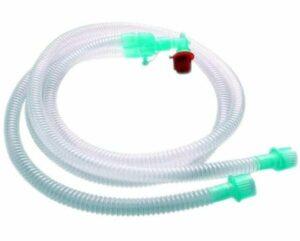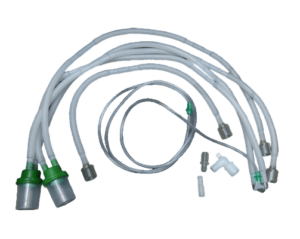In the realm of modern medicine, patient safety and procedural efficiency are paramount concerns for healthcare professionals. The development and utilization of advanced technologies play a pivotal role in achieving these goals, particularly in the context of breathing circuits. Breathing circuits, also known as respiratory circuits are vital components in various medical procedures that involve the delivery of oxygen and anesthetic gases to patients. These circuits facilitate the exchange of gases, ensuring adequate ventilation and maintaining patient stability during surgeries, critical care management, and other respiratory interventions.
The optimization of breathing circuits has become an essential focus in medical research and practice, driven by the need to enhance patient safety, improve clinical outcomes, and maximize resource utilization. This optimization entails a comprehensive evaluation of circuit design, gas flow dynamics, humidification mechanisms, and monitoring systems. By scrutinizing and refining each component of the breathing circuit, healthcare professionals aim to minimize risks associated with respiratory complications, enhance the precision of gas delivery, and streamline the overall procedure for improved efficiency.
One of the main goals of optimizing breathing circuits is to minimize the likelihood of negative events like low oxygen levels, lung overexpansion, and lung collapse. These complications can arise from inadequate oxygenation, improper gas flow regulation, or inefficient removal of exhaled carbon dioxide. By employing state-of-the-art technologies and meticulous design considerations, medical practitioners can minimize the likelihood of such complications, ensuring patients receive the optimal level of respiratory support.
Efficiency is another crucial factor driving the evolution of breathing circuits. In a healthcare landscape where time is of the essence, optimizing procedures to reduce the duration of surgeries and minimize recovery time is imperative. Streamlining the delivery of gases, enhancing gas exchange mechanisms, and integrating advanced monitoring systems can collectively contribute to expediting medical procedures, improving throughput, and ultimately benefiting both patients and healthcare providers.
Moreover, breathing circuit optimization encompasses a broader perspective beyond individual patient outcomes. It also addresses the efficient use of resources, including gases, electricity, and other consumables. By implementing innovative strategies to reduce waste and enhance resource management, healthcare facilities can minimize costs, improve sustainability, and promote eco-friendly practices.
In this blog, we delve into the multifaceted aspects of breathing circuit optimization and explore the latest advancements that have revolutionized medical procedures. We examine the fundamental principles governing circuit design, discuss novel technologies that enhance patient safety, and highlight the role of real-time monitoring in ensuring efficient gas exchange. Additionally, we delve into the future prospects of breathing circuits, envisioning advancements that may further improve patient outcomes and drive healthcare innovation.
Through this exploration, we aim to shed light on the significance of breathing circuit optimization in the realm of patient safety and procedural efficiency. By understanding the intricacies of respiratory circuits and embracing cutting-edge advancements, healthcare professionals can continue to push the boundaries of medical care, fostering a safer, more streamlined, and patient-centered approach to respiratory interventions.
But before we embark on this insightful journey, let us introduce you to Medzell—a groundbreaking B2B platform revolutionizing the promotion of Indian medical devices in emerging markets.
Types of Breathing Circuits
- Disposable Breathing Circuits: Breathing circuits are integral components of medical equipment used in various procedures. Among the different types available, disposable breathing circuits offer numerous advantages. Firstly, they significantly reduce the risk of contamination and cross-infection between patients, ensuring optimal patient safety. These single-use circuits eliminate the need for complex cleaning and sterilization processes, saving valuable time and resources. Moreover, disposable breathing circuits promote convenience and ease of use, streamlining medical procedures and reducing the chances of human error.
- Reusable Breathing Circuits: While disposable breathing circuits excel in certain areas, reusable breathing circuits offer their own set of benefits. Constructed from durable materials, reusable circuits provide cost-effectiveness and long-term reliability. With proper maintenance and cleaning techniques, these circuits can withstand multiple uses without compromising patient safety. They are particularly advantageous for medical facilities handling a high volume of patients, as they minimize waste and reduce operational costs. To ensure optimal performance and longevity, diligent adherence to recommended cleaning procedures is crucial.
Components of Breathing Circuits
- Breathing Circuit Hoses: Breathing circuit hoses play a vital role in delivering a continuous flow of oxygen and anesthetic gases to patients during medical procedures. These hoses are specially designed to be flexible, long-lasting and highly resistant to bending or folding. The composition of breathing circuit hoses ensures the safe transmission of gases, while their ergonomic design promotes ease of use for healthcare professionals.
- Breathing Circuit Filters: Breathing circuit filters are crucial components that help maintain clean and safe breathing circuits. They effectively remove contaminants, particulate matter, and microorganisms, ensuring the delivery of clean air to patients. By filtering out potential hazards, breathing circuit filters safeguard patients and reduce the risk of respiratory complications. It is essential to understand the role of these filters and adhere to regular maintenance practices to ensure their optimal performance.
- Breathing Circuit Connectors: Breathing circuit connectors are essential for establishing secure connections between various medical equipment components. These connectors come in different shapes, sizes, and configurations, and their proper selection and usage are critical to ensure proper functionality. By understanding the significance of breathing circuit connectors, healthcare professionals can ensure a seamless flow of gases during medical procedures.
- Breathing Circuit Bags: Breathing circuit bags play a crucial role in efficient gas delivery and waste removal during medical procedures. These bags, often made from high-quality materials, provide a reservoir for anesthetic gases and oxygen, ensuring a consistent and uninterrupted supply to the patient. Additionally, breathing circuit bags aid in the removal of waste gases, preventing their accumulation in the patient’s system.
Cleaning and Maintenance of Breathing Circuits
Breathing circuits, as crucial components of medical procedures, require regular cleaning and maintenance to ensure optimal performance, prevent contamination, and promote patient safety. Proper cleaning and maintenance protocols help reduce the risk of infections, equipment malfunctions, and compromised gas delivery. In this section, we delve into the key considerations and best practices for cleaning and maintaining breathing circuits.
- Follow Manufacturer Guidelines: It is essential to consult the manufacturer’s instructions and guidelines specific to the breathing circuit being used. Manufacturers provide detailed instructions on cleaning agents, cleaning frequency, and recommended maintenance procedures. Adhering to these guidelines ensures compliance with industry standards and helps maintain warranty validity.
- Disassemble and Inspect: After each use, carefully disassemble the breathing circuit according to the manufacturer’s instructions. Carefully examine each component for any indications of usage, impairment, or changes in coloration. Replace any damaged or deteriorated parts to maintain the integrity of the circuit.
- Pre-Cleaning Disposal: Discard disposable components, such as single-use filters, as per the manufacturer’s instructions. Dispose of them in designated waste containers following healthcare facility protocols.
- Cleaning Agents and Techniques: Select appropriate cleaning agents recommended by the manufacturer or use agents commonly used in healthcare settings, such as enzymatic cleaners or mild detergent solutions. Avoid harsh chemicals that may degrade or damage the circuit materials. Use soft brushes or lint-free cloths to clean the circuit components effectively. Pay special attention to areas that may harbor contaminants, such as connectors, valves, and tubing.
- Rinse and Dry: Thoroughly rinse the cleaned components with clean water to remove any residual cleaning agents. Ensure all traces of cleaning agents are eliminated to prevent patient exposure to potentially harmful substances. After rinsing, allow the components to air dry in a clean and dust-free environment or use designated drying equipment, if available.
- Sterilization and Disinfection: Depending on the breathing circuit type and manufacturer’s instructions, certain components may require sterilization or high-level disinfection. Follow established protocols for sterilization methods such as autoclaving or ethylene oxide sterilization or use approved disinfectants for high-level disinfection. Pay attention to recommended exposure times and concentration levels to ensure effective sterilization or disinfection.
- Storage and Packaging: Once the breathing circuit components are thoroughly cleaned, dried, sterilized, or disinfected, store them in a clean and dry environment. Properly label and package the components to maintain their sterility and protect them from potential contamination.
- Regular Inspection and Preventive Maintenance: Implement a routine inspection schedule to assess the condition of breathing circuit components. Regularly check for leaks, cracks, or signs of deterioration. Perform preventive maintenance such as lubrication of valves or replacement of worn-out parts as recommended by the manufacturer. Keep a record of maintenance activities and promptly address any identified issues or concerns.
- Staff Training and Compliance: Provide comprehensive training to healthcare personnel involved in the cleaning and maintenance of breathing circuits. Ensure they understand the importance of adhering to cleaning protocols and following recommended practices. Regularly reinforce proper techniques and provide ongoing education regarding any updates or changes in cleaning and maintenance procedures.
By implementing thorough cleaning and maintenance protocols, healthcare facilities can mitigate the risk of cross-contamination, maintain the functionality of breathing circuits, and safeguard patient safety. Adhering to manufacturer guidelines, employing suitable cleaning agents, and conducting regular inspections contribute to the longevity and effectiveness of these critical medical devices, ultimately enhancing the quality of care delivered to patients.
Troubleshooting Common Breathing Circuit Issues
Breathing circuits are complex systems that can occasionally experience issues during use. Timely identification and resolution of these issues are crucial to maintaining patient safety and ensuring the effectiveness of respiratory interventions. In this section, we will discuss some common breathing circuit issues and provide troubleshooting tips to address them effectively.
- Blockage or Obstruction:
- Check for any kinks or twists in the tubing and straighten them out if found.
- Verify that filters and humidifiers are properly installed and not clogged with debris.
- Inspect the connectors and ensure they are securely connected without any obstructions.
- Clear any visible blockages by gently removing them using appropriate techniques or tools as recommended by the manufacturer.
- Leaks:
- Inspect the breathing circuit for any visible signs of leakage, such as disconnected or loose connections, damaged tubing, or faulty valves.
- Tighten loose connections, ensuring a secure fit without overtightening.
- Replace damaged or worn-out components, such as cracked tubing or malfunctioning valves.
- Conduct a leak test by occluding the patient end of the circuit and monitoring for any pressure drop. If a significant drop is observed, systematically check each component to identify the source of the leak.
- Excessive Condensation:
- Verify that the humidifier is functioning properly and set to the appropriate humidity level.
- Ensure that the water level in the humidifier is within the recommended range.
- Inspect the breathing circuit for any leaks or loose connections that may contribute to excess condensation.
- Consider using a condensation trap or water trap in the circuit to collect excess moisture and prevent it from reaching the patient.
- Disconnection or Dislodgement:
- Ensure that all connections, including tubing, filters, and connectors, are securely attached.
- Check for signs of wear or fatigue in the connectors and replace them if necessary.
- Use adhesive tape or securement devices to help stabilize and secure the circuit in place, minimizing the risk of accidental disconnection.
- Equipment Malfunction:
- If there are issues with specific equipment, such as faulty valves or malfunctioning sensors, consult the manufacturer’s instructions for troubleshooting or contact technical support.
- Follow any recommended diagnostic or calibration procedures provided by the manufacturer to resolve equipment-related malfunctions.
- Inadequate Gas Flow:
- Verify that the flowmeters or regulators are set to the appropriate gas flow rates as prescribed for the patient’s condition.
- Check for any obstructions or blockages in the gas delivery system, including tubing and connectors.
- Ensure that gas cylinders or sources are adequately pressurized and not depleted.
If troubleshooting steps do not resolve the issue or if there are concerns about patient safety, it is crucial to involve healthcare professionals, biomedical engineers, or equipment specialists for further evaluation and assistance. Regular equipment maintenance and adherence to manufacturer guidelines for cleaning, maintenance, and replacement intervals can help prevent many of these issues from occurring. Additionally, staff training on proper handling and troubleshooting of breathing circuits can contribute to prompt identification and resolution of any issues that may arise during clinical practice.
Understanding Breathing Circuit Standards: Safe and Effective Usage
Adhering to industry standards and regulations is essential for the safe and effective usage of breathing circuits in medical environments. Compliance with these standards guarantees patient safety, reduces the risk of complications, and ensures optimal performance. Healthcare providers must familiarize themselves with the specific guidelines governing breathing circuits, including sterilization procedures, recommended materials, and maintenance protocols.
Proper usage of Breathing Circuits
Proper usage of breathing circuits is essential to ensure the safe and effective delivery of respiratory support during medical procedures. Adhering to established guidelines and protocols helps healthcare professionals optimize patient outcomes and minimize the risk of complications.
Proper usage of breathing circuits requires attention to detail, adherence to guidelines, and ongoing monitoring. By following established protocols and maintaining a high standard of care, healthcare professionals can optimize patient safety, enhance procedural outcomes, and provide effective respiratory support during medical interventions.
Importance of Continuous Patient Monitoring During Procedures Involving Breathing Circuits
Continuous patient monitoring is paramount during medical procedures involving breathing circuits. It enables healthcare professionals to closely observe vital signs, detect any anomalies, and intervene promptly if necessary. By employing advanced monitoring systems and adhering to patient safety protocols, healthcare providers can ensure optimal patient outcomes and mitigate potential risks.
Latest Infection Control Measures for Breathing Circuits
Infection control is of paramount importance in healthcare settings, and breathing circuits are no exception. Implementing robust infection control measures minimizes the risk of healthcare-associated infections and ensures patient safety. It is crucial to follow strict protocols, such as proper hand hygiene, appropriate disposal of disposable circuits, and regular cleaning and disinfection of reusable circuits.
Specialized Breathing Circuits for Pediatric Patients
Pediatric patients have unique needs when it comes to medical procedures, and breathing circuits are no different. Specialized breathing circuits designed specifically for pediatric patients ensure optimal care, comfort, and safety. These circuits accommodate the smaller anatomy of children and infants, providing appropriate gas delivery and minimizing the risk of complications.
Breathing Circuits From Leading Indian Manufacturers
Neo-Respire Mapelson D (Bain) Coaxial Breathing System (Adult)

Forca Healthcare, the leading manufacturer and global supplier of breathing circuits in India produces the Neo-Respire Mapelson D (Bain) Coaxial Breathing System (Adult). This coaxial breathing system features a 30 mm diameter tube and a single coaxial limb of 1.6 mm in length. It also includes a luer port on the elbow, enabling easy access for additional devices. The system is provided with a 2 L breathing bag and an APL valve, ensuring optimal ventilation during anesthesia procedures.
Anaesthesia Circuit
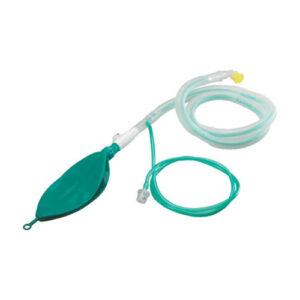
The Anaesthesia Circuit manufactured by Medisafe International is a high-quality dual-limb circuit designed for use with anesthesia machines. It comes with a sample port elbow, an extra tube with a connector, and a 2 L breathing bag. The circuit is single-use and packed in a poly pouch for convenience and hygiene. With its reliable performance and sterile packaging, this circuit meets the requirements of anesthesia procedures, ensuring patient safety and comfort.
Anesthesia Systems
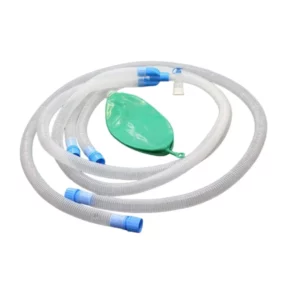 Nishi Medcare, an Indian-based industry leader, specializes in manufacturing and globally supplying Anaesthesia Systems. These meticulously designed systems ensure patients receive dependable and effective respiratory support during surgical procedures. Prioritizing excellence, affordability, and cutting-edge technology, Nishi Medcare provides an extensive range of anesthesia breathing systems tailored to meet the unique demands of healthcare facilities across South Africa, Nigeria, Kenya, and beyond.
Nishi Medcare, an Indian-based industry leader, specializes in manufacturing and globally supplying Anaesthesia Systems. These meticulously designed systems ensure patients receive dependable and effective respiratory support during surgical procedures. Prioritizing excellence, affordability, and cutting-edge technology, Nishi Medcare provides an extensive range of anesthesia breathing systems tailored to meet the unique demands of healthcare facilities across South Africa, Nigeria, Kenya, and beyond.
The distinguished features comprise pliable and featherweight 1.5m tubing with internal fresh gas tubing, offering versatile tubing size options (22MM/16MM) with a length of 1.6m. Noteworthy additions include a 7.6mm suction port, a non-popping cap/CO2 port elbow, and an extra 1.5m limb. Moreover, the system offers a choice between 2 liters or 0.5 liters rebreathing bags, along with a 22M/15F-15M fixed elbow featuring a Co2 port and a threaded connector of 22M/15F. Additionally, the system showcases a 3m anesthesia circuit complete with fresh gas tubing, a 0.5ltrs rebreathing bag, and a bag bleed release valve, ensuring impeccable performance and control.
Ventilator Circuit
The Ventilator Circuit manufactured by MEDITECH DEVICES PVT LTD is one of the best breathing circuits available in India. MEDITECH DEVICES PVT LTD is a leading manufacturer and global supplier known for its high-quality medical devices. This ventilator circuit is constructed using medical-grade corrugated PVC, ensuring durability and flexibility. It is equipped with a recessed standard 22 mm Male/Male and 22 mm Male/Female adapter, allowing compatibility with various ventilators. The circuit offers versatility and reliability, making it ideal for critical care management. It is available with options for self-expanding and non-expanding configurations, with or without water trappers.
Airotubin Ventilator Circuit
Airways Surgical Pvt. Ltd., one of the leading manufacturers and global suppliers of reusable breathing circuits, manufactures the Airotubin Ventilator Circuit. This ventilator circuit is designed to connect the patient’s lungs to the mechanical ventilator, ensuring efficient and safe ventilation. It is highly transparent and flexible, allowing for easy monitoring and patient observation. The circuit is sterile, with minimal compliance, ensuring optimal performance and patient safety. Additionally, it can be customized according to specific requirements, providing a tailored solution for healthcare professionals.
These medical products manufactured by ONTEX Medical Devices Manufacturing Pvt. Ltd., Forca Healthcare, Medisafe International, MEDITECH DEVICES PVT LTD, and Airways Surgical Pvt. Ltd. offer high-quality solutions for ventilatory and anesthetic needs. Their features, such as secure connections, transparency, flexibility, and compatibility with standard devices, make them reliable choices for healthcare professionals. With their superior performance and adherence to industry standards, these products are trusted by medical practitioners worldwide. Choose from the range of ventilator circuits and breathing systems to ensure optimal patient care and ventilation management.
Medzell: Pioneering Medical Devices for the Future
Medzell is an innovative B2B platform that serves as a gateway to the thriving medical device industry. With its futuristic approach, Medzell connects global healthcare professionals with reliable and high-quality medical devices. By providing a seamless marketplace for suppliers and buyers, Medzell aims to enhance accessibility, affordability, and promote exceptional medical technology advancements. Through this platform, healthcare providers can access cutting-edge breathing circuits and other medical devices, ensuring top-notch patient care across emerging markets.
Conclusion
Breathing circuits play a vital role in enhancing patient safety and optimizing medical procedures. Whether it’s the benefits of disposable circuits, the cost-effectiveness of reusable circuits, or the importance of proper cleaning and troubleshooting, understanding the nuances of breathing circuits is essential for healthcare professionals. By staying informed about industry standards, following best practices, and incorporating advanced technologies, healthcare providers can deliver exceptional care while ensuring patient safety.
